The best time to visit Vancouver Island is between the months of June and September for the best weather and the most sunshine, between May and November for the best whale-watching experiences, or between December and February for the best storm watching and the most powerful waterfalls. Year round, there’s something incredible to do and explore on Vancouver Island.
Looking for the best time of year to visit Vancouver Island? I love sharing the best things to do on Vancouver Island with people, and for this post I’ve broken down month-by-month everything you need to know to visit Vancouver Island.
- Vancouver Island Overview
- Vancouver Island Weather by Month
- Weather on Vancouver Island in January
- Weather on Vancouver Island in February
- Weather on Vancouver Island in March
- Weather on Vancouver Island in April
- Weather on Vancouver Island in May
- Weather on Vancouver Island in June
- Weather on Vancouver Island in July
- Weather on Vancouver Island in August
- Weather on Vancouver Island in September
- Weather on Vancouver Island in October
- Weather on Vancouver Island in November
- Weather on Vancouver Island in December
- Best Time of Year to Visit Vancouver Island for Whale Watching
- Best Time of Year to Visit Vancouver Island for the Salmon Run
- Best Time of Year to Visit Vancouver Island for Grizzly Bear Tours
- Best Time of Year to Visit Vancouver Island for the Herring Spawn
- Best Time of Year to Visit Vancouver Island for Hiking
- Best Time of Year to Visit Vancouver Island for Surfing
- Best Time of Year to Visit Vancouver Island for Waterfalls
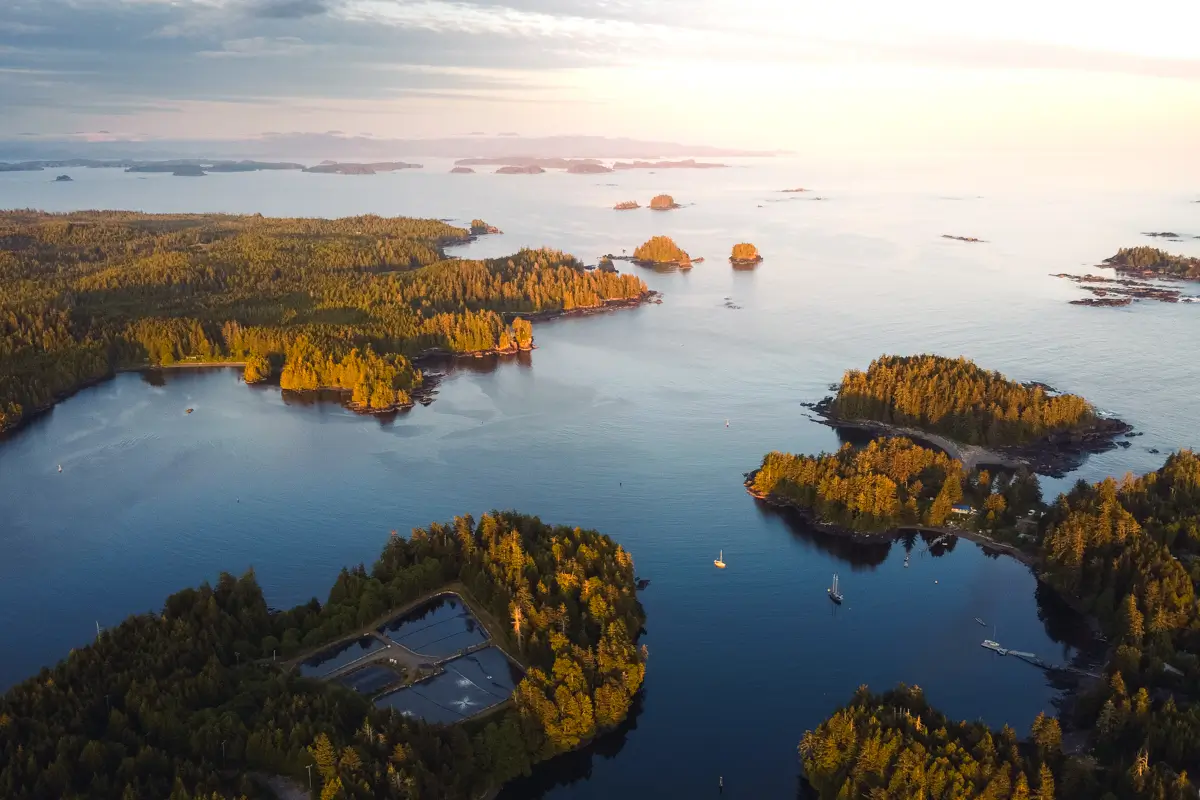
Vancouver Island Overview
Vancouver Island, located off the west coast of Canada, is a significant destination for tourists due to its unique geography and climate. It features a mild climate year-round, with cool, rainy winters and warm, dry summers. This climate supports a variety of outdoor activities throughout the year. From dense, old-growth rainforests to rugged coastal areas, the island is host to a range of diverse ecosystems, home to black bears, cougars, marmots, and many more. The waters around the island are home to many species of whales, salmon, and other marine life, offering opportunities for whale watching. The coastal areas provide access to marine biodiversity, with tide pools and spectacular beaches that reveal various marine species at low tide. The main difference between Vancouver Island and the rest of Canada is the lack of snow in the winter – though it does rain lots to make up for it.
Vancouver Island Weather by Month
Weather on Vancouver Island in January
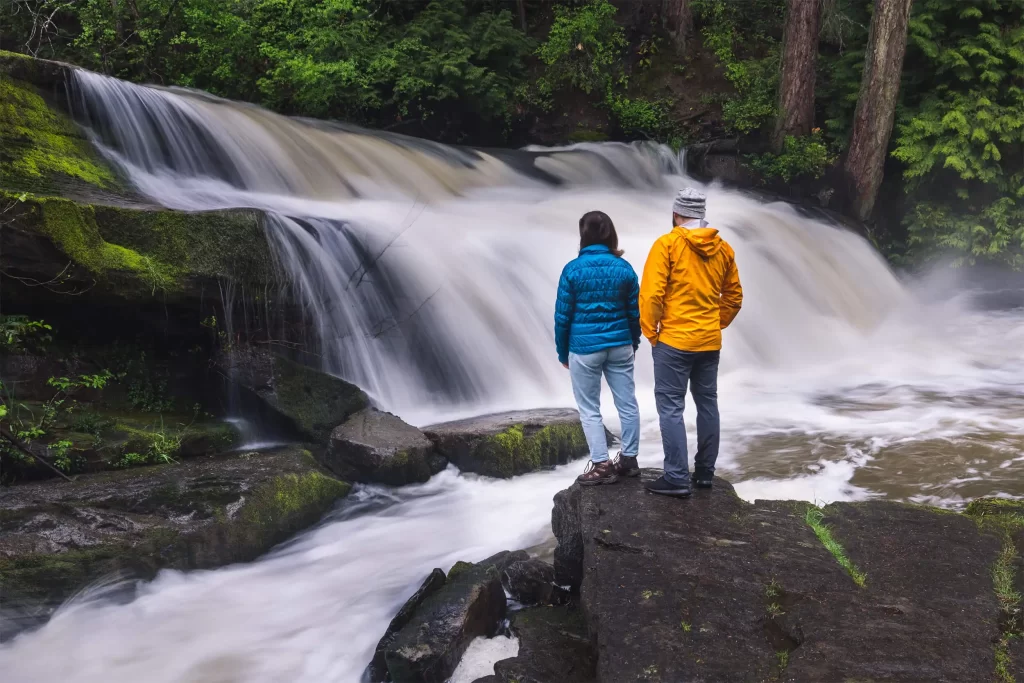
Lower Millstone River Falls on Vancouver Island in January
January on Vancouver Island continues is winter, with average temperatures hovering between 3°C and 7°C. This month is one of the coldest on the island, characterized by its significant rainfall and frosty mornings, especially in more inland and elevated areas. Snow is rare in lower elevations but can be found in the mountains such as in Strathcona Provincial Park, offering picturesque winter scenes and opportunities for snow sports.
The frequent rainy days contribute to the island’s lush landscapes, with forests and parks remaining vibrant and green, a stark contrast to the barren winter scenes often found elsewhere in Canada. The damp conditions can make outdoor activities challenging but also uniquely rewarding for those prepared with appropriate rain gear.
Outdoor pursuits are mostly centered around walking and hiking outside of the central mountains, where the beauty of the wet rainforest can be fully appreciated. The cooler temperatures and wet weather reduce the crowds, providing a more solitary experience of the island’s natural beauty. Waterfalls are flowing spectacularly this time of year, making them worthwhile destinations. Be warned however that most trails are super muddy this time of year.
For those seeking snow-based activities, the higher elevation of Mount Washington and Mount Cain offer skiing, snowboarding, and snowshoeing. These areas can provide a winter wonderland experience that’s relatively accessible from the milder coastal regions.
Storm watching is a popular activity in January, particularly along the west coast like in Tofino, where the powerful winter storms of the Pacific Ocean display their might. It’s an exhilarating experience to watch the waves crash against the shore, showcasing the raw power of nature.
Wildlife observations during this time may include sightings of bald eagles, as well as occasionally porpoises, humpback whales, and orcas. January is peak breeding season for elephant seals, who along with harbour seals and sea lions can occasionally be seen congregating on the rocks.
Weather on Vancouver Island in February

Mt Brulé on Vancouver Island in February
February on Vancouver Island is often seen as the deep winter month, with temperatures ranging from 2°C to 7°C. It’s a period that still experiences a significant amount of rainfall, though slightly less than January, and continues the cool, damp conditions characteristic of the island’s winter. However, towards the end of the month, there are occasional early signs of spring, as days slowly start to lengthen and the first early blossoms begin to appear. Victoria’s pink cherry blossoms begin to show themselves by the end of February, teasing the show they provide over the next month or so.
Snow remains a rarity in the lower elevations but is still common in the mountain regions, where winter sports activities continue. Hiking and stormwatching remain popular activities for those avoiding the snow.
Weather on Vancouver Island in March
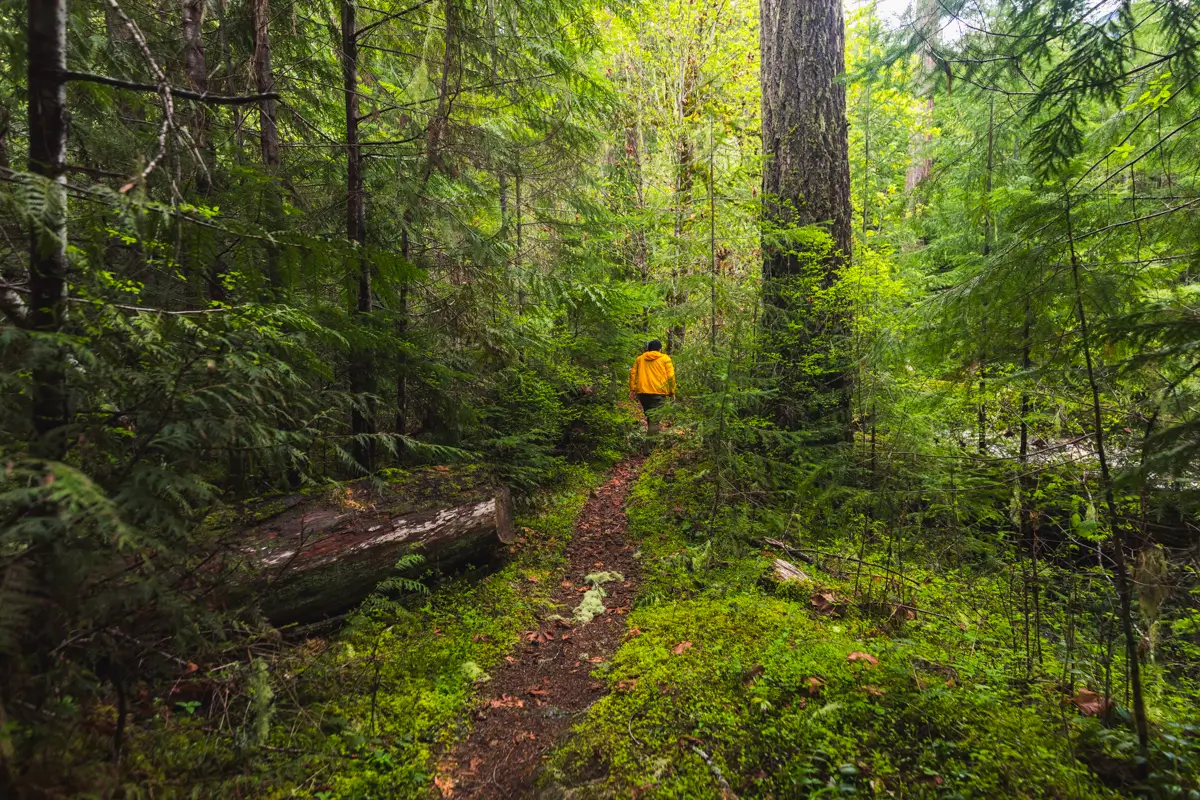
March on Vancouver Island sees the start of a shift towards spring, with temperatures rising to around 10°C. This month marks an increase in sunnier days, although the weather can still be quite variable. It’s a time when the island begins to shake off the winter chill, and signs of spring become more evident.
The rainfall of winter starts to give way to more frequent sunny periods, making outdoor activities more appealing. While you might still experience some rainy days, the increase in daylight hours provides greater opportunities to explore the island’s natural beauty.
Gardens and parks on the island start to come alive with early spring flowers like crocuses, tulips, and hyacinths. In Victoria cherry blossoms are in full bloom, and many of the citys streets are spectacularly framed by the pink trees. March is a good time for outdoor enthusiasts to start enjoying the milder weather, with hiking trails becoming more accessible as snow recedes in lower elevations. However, higher elevations like Mount Washington may still offer snow sports opportunities due to lingering snowpack.
Water activities begin to pick up, with kayakers and paddle boarders taking advantage of the calmer sea conditions. March also coincides with the herring spawn, a critical ecological event that turns the waters near the shore a vibrant tropical turquoise. This phenomenon attracts all kinds of wildlife, including birds, seals, and larger marine mammals. It’s also the beginning of the grey whale migration, when these majestic creatures can be spotted along the coast as they make their annual journey northward from Mexico to their feeding grounds in the Bering Sea. Tofino hosts the Pacific Rim Whale Festival every March to coincide with the migration.
Weather on Vancouver Island in April
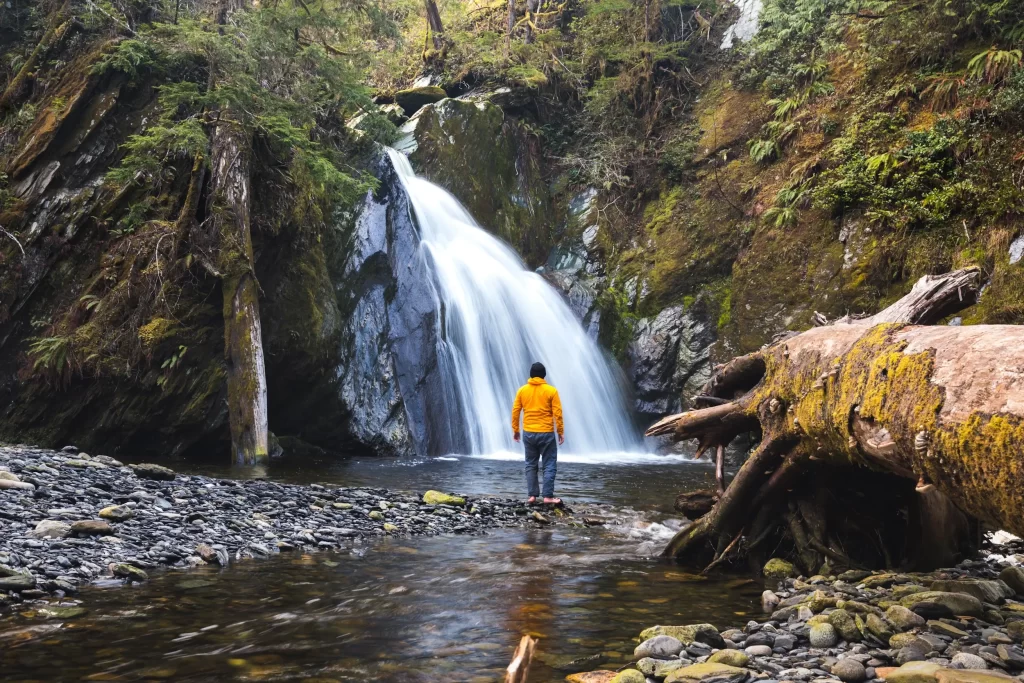
Falls Creek Falls on Vancouver Island in April
April on Vancouver Island is characterized by a more pronounced arrival of spring, with temperatures ranging from 5°C to 11°C. This month sees a further reduction in rainfall and a notable increase in sunny days, making it an appealing time for a wide range of outdoor activities.
Outdoor enthusiasts find April to be a particularly rewarding time to explore. Hiking trails are free of snow, offering clear paths through increasingly lush environments. While the highest peaks may still have some snow, most winter sports have wound down, giving way to spring pursuits.
Water sports activities continue to gain momentum, with kayakers, paddle boarders, and even early-season swimmers taking to the waters. The longer daylight hours and milder weather conditions make it ideal for longer excursions and exploring the island’s extensive coastline and inland waterways. Around mid-April the highly invasive noxious plant Scotch Broom bursts into colour, with its beautiful but insidious yellow flowers seen lining roads all the way up and down the island.
Wildlife activity increases significantly, with a greater variety of birds being observed as migratory species return, including the annual return of the Rufous Hummingbird. Tofino is home to the Shorebird Festival during this month, and Parksville is home to the Brant Wildlife Festival. Marine life, too, becomes more visible, including more frequent sightings of seals and sea lions near the shores as well as the ongoing gray whale migration, which peaks around halfway through the month. The whalewatching season for orcas and humpbacks begins as well, with the latter returning from their winter homes in Mexico or Hawaii. Victoria starts to become busier with the arrival of the first cruise ship of the season, kicking off the local tourism industry.
Weather on Vancouver Island in May
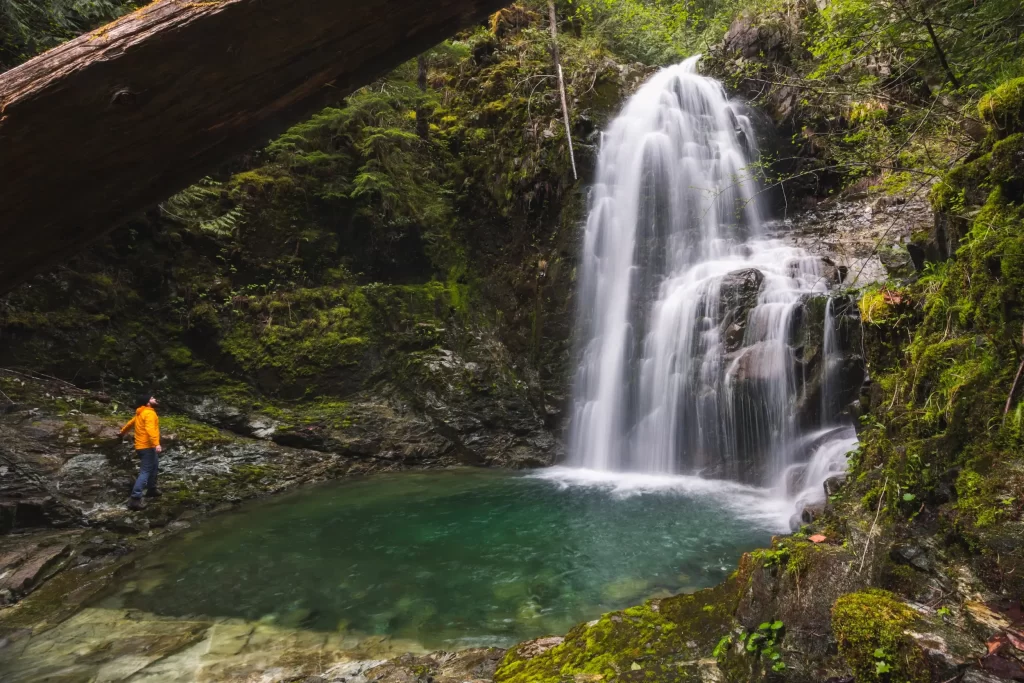
Weiner Falls on Vancouver Island in May
May on Vancouver Island brings warmer weather with average temperatures ranging from 8°C to 14°C. This month typically experiences a further decrease in rainfall, resulting in more consistent sunny days, which enhances the appeal of outdoor activities and exploration.
The natural landscape is fully alive in May, with a diverse array of flowering plants and lush greenery. Gardens are at their peak, and the wild areas of the island are lush and verdant, drawing nature enthusiasts and photographers. The city gets busier too, with more tourists arriving daily, and the Swiftsure International Yacht Race being held in Victoria.
The warmer and drier conditions make May ideal for hiking and biking. Trails across the island, from coastal paths to forest routes, are in excellent condition, offering opportunities for all levels of outdoor adventurers. The reduced snowpack in higher elevations opens up more areas for exploration.
Water-based activities become increasingly popular, with conditions favorable for kayaking, canoeing, and stand-up paddleboarding. The sea and lakes are more inviting, although water temperatures can still be cool.
Wildlife viewing opportunities are abundant, with birdwatching particularly rewarding as migratory species are present. The marine environment also becomes more active, with increased sightings of marine mammals such as dolphins and seals, whales, especially returning dolphins, and seals, as well as minke and fin whales. Whalewatching season really begins so if it’s on your bucket list – this may just be one of the best times of year to visit Vancouver Island.
Weather on Vancouver Island in June
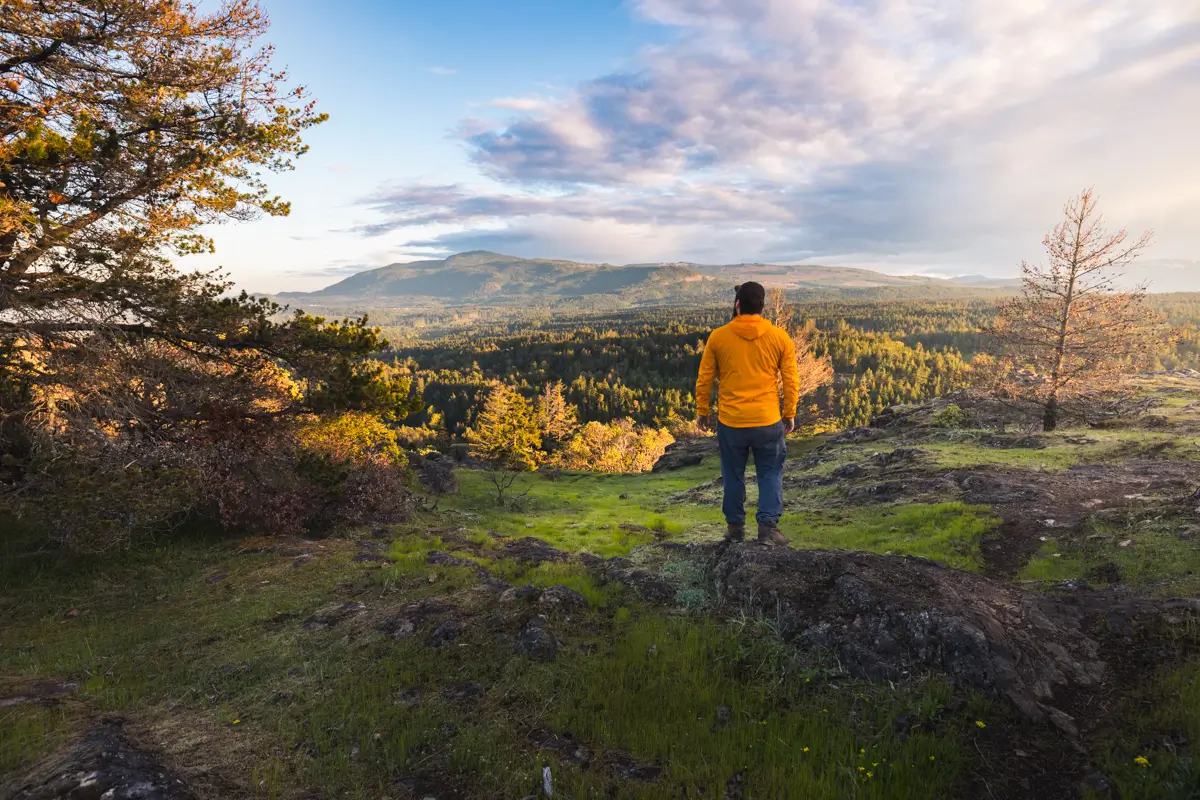
Lonetree Hill on Vancouver Island in June
June on Vancouver Island signifies the start of summer, with temperatures rising to 16°C. This month usually sees a substantial decrease in precipitation, leading to more consistent periods of sunshine and warmth, which invites an array of summer activities.
By June all of the plants are fully in bloom, and deciduous trees finally have regrown all their leaves. Outdoor activities are in full swing, with hiking and mountain biking trails being popular among locals and visitors. The trails are dry and offer easier access to the island’s natural attractions, including now-shrinking waterfalls, forests, and coastal areas. Camping also becomes a favored activity, with many choosing to enjoy the longer days and milder nights under the stars. In my opinion June is the best time of year to visit Vancouver Island without it being too cold – but before it gets too hot.
Water sports enthusiasts find June ideal for their pursuits, with warmer weather making the ocean, rivers, and lakes particularly appealing for kayaking, sailing, and swimming. The calmer sea conditions also allow for more comfortable ferry rides and boat tours, providing opportunities to explore the coastline and view marine wildlife.
The last trickle of the grey whale migration can be seen in June, but other whalewatching activities are at their peak. Head to the Comox Valley for the BC Shellfish Festival, or explore music festivals like Victoria’s Ska Fest or Cowichan’s Laketown Shakedown.
Weather on Vancouver Island in July

Mt Tzouhalem Viewpoint on Vancouver Island in July
July on Vancouver Island epitomizes the peak of the summer season, with average temperatures reaching up to 25°C. This month is characterized by long stretches of sunny days and minimal rainfall, creating ideal conditions for a wide range of summer activities and outdoor enjoyment.
Plants are in bloom, though the heat has yellowed many grasses, especially in the city. Outdoor activities are at their zenith, with residents and visitors alike taking advantage of the favorable weather. Hiking, biking, and camping are popular pursuits, with all trails and campsites open and accessible. Many tourists make the drive between Victoria and Tofino, seeing as many sights as possible along the way. Locals avoiding the crowds head to Strathcona.
Water sports see a significant uptick in July, with the ocean, lakes, and rivers offering refreshing escapes from the summer heat. Kayaking, canoeing, paddleboarding, and swimming are favorite activities, alongside more adventurous options like surfing and sailing. The warmer water temperatures make beach days particularly enjoyable, with families and groups gathering to soak up the sun and play in the Pacific.
Wildlife viewing remains exceptional, with opportunities to observe birds, marine life, and terrestrial animals in their natural habitats. Whale watching tours are in full swing, offering chances to see orcas, humpbacks, and other marine mammals up close. The island’s parks and wilderness areas are also bustling with life, providing nature enthusiasts with endless exploration possibilities.
Weather on Vancouver Island in August
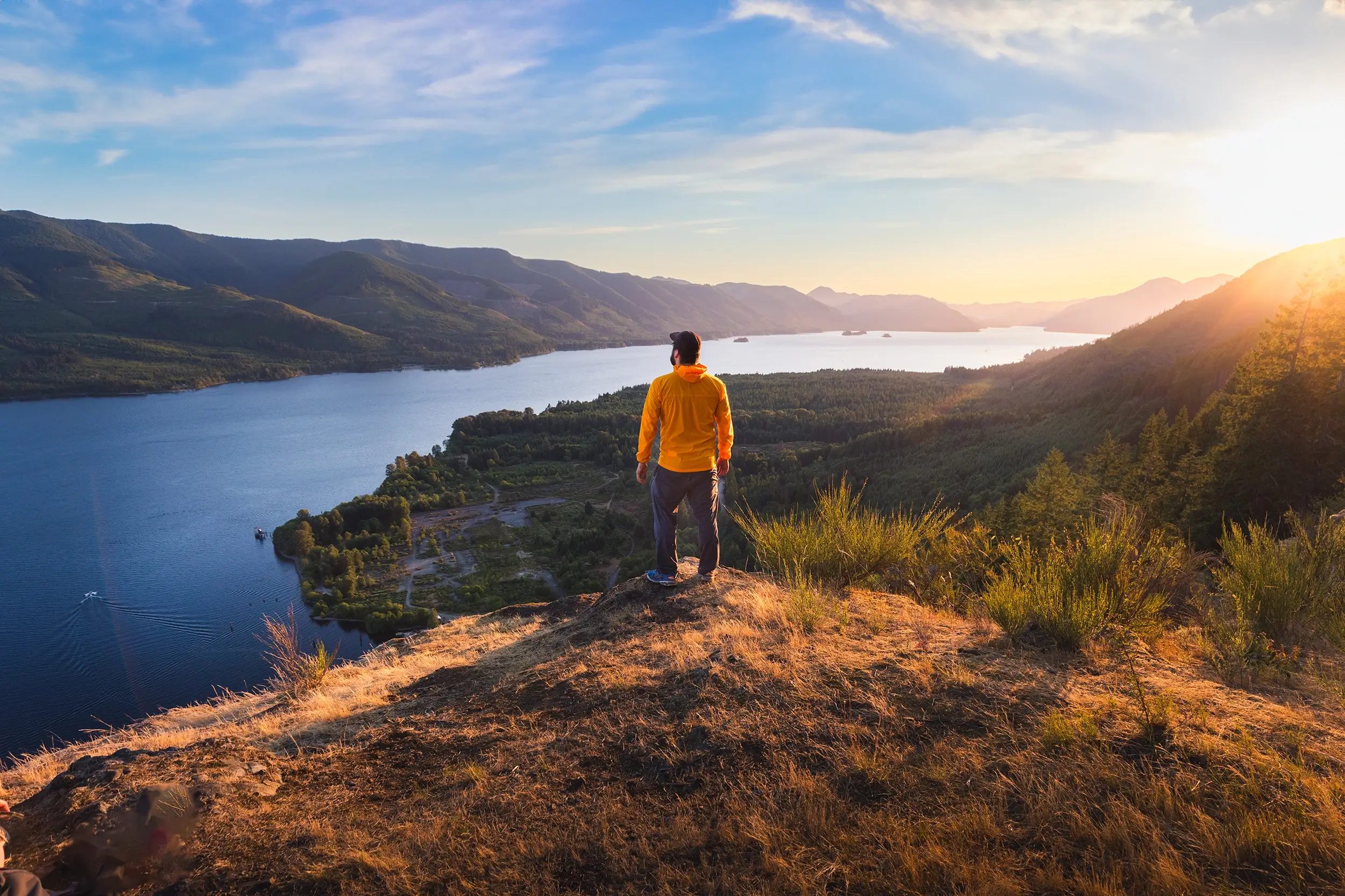
Christopher Rock on Vancouver Island in August
August on Vancouver Island is the height of summer, with temperatures typically remaining consistent with July. This month is characterized by the lowest rainfall of the year, providing plenty of sunny and warm days that are ideal for all types of summer activities.
The island’s natural landscape is vibrant and fully alive, with late-summer blooms adding colour to both wild spaces and cultivated gardens. The warm weather and long daylight hours encourage spending as much time outdoors as possible, whether it’s for leisurely activities or more adventurous pursuits.
August is an excellent month for exploring the cities and towns of Vancouver Island, with notable festivals such as the Filberg Festival and Phillips Backyard Festival Taking place.
Weather on Vancouver Island in September
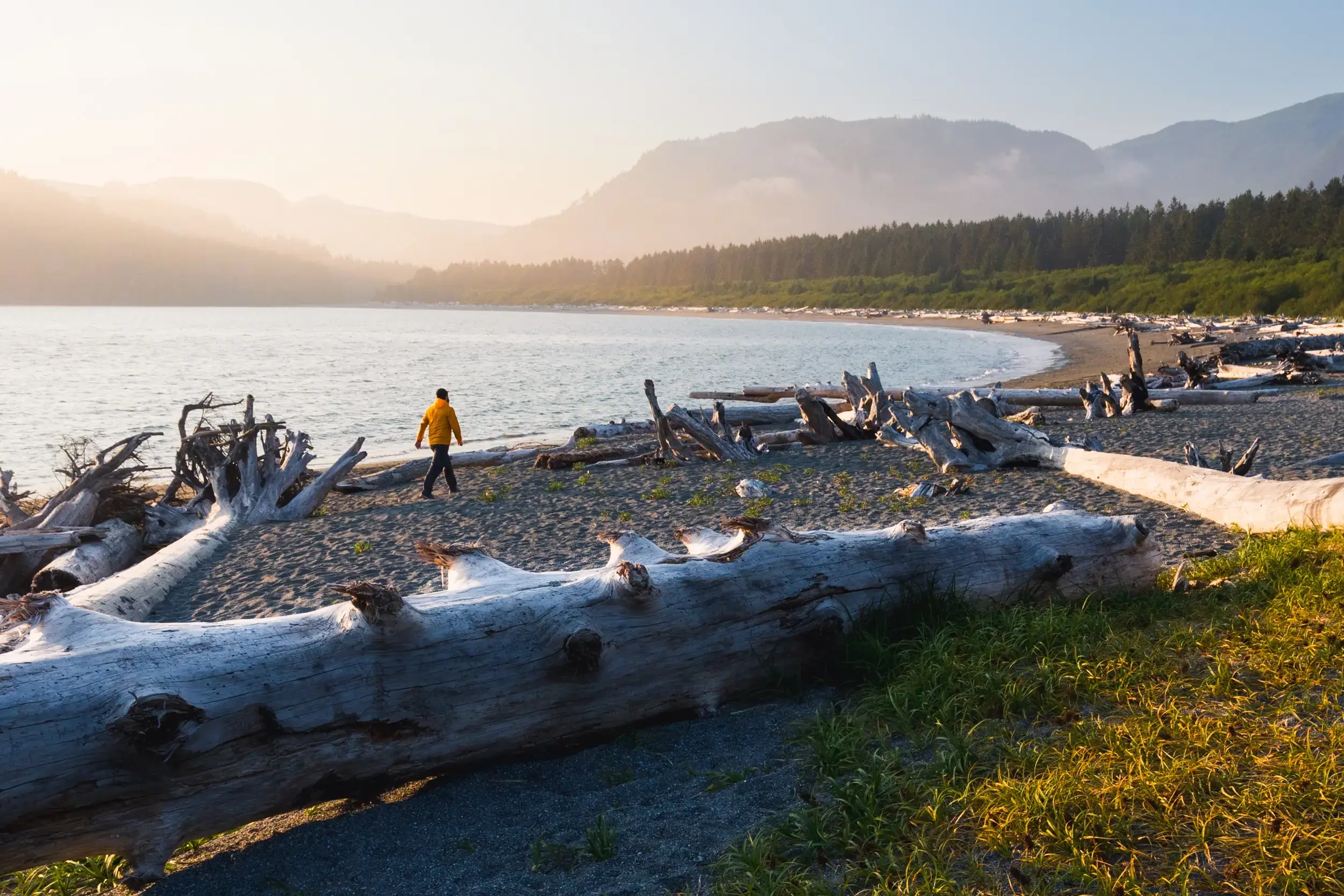
Pacheedaht Beach on Vancouver Island in September
September on Vancouver Island marks the beginning of the transition from summer to fall, with average temperatures ranging from 10°C to 17°C. While the month starts with many of the warm and sunny characteristics of summer, it gradually introduces cooler evenings and the first hints of autumnal change by its end. Rainfall begins to increase compared to the drier summer months, yet there are still many clear, beautiful days to enjoy.
The natural scenery starts to shift, with early fall colours beginning to appear in the foliage. This change creates a picturesque setting for outdoor activities, which remain plentiful due to the generally mild weather.
Hiking and biking continue to be popular, with the cooler temperatures making for more comfortable conditions on the trails. Camping is still enjoyable, especially in the early part of the month, allowing for cozy nights under the stars amidst the crisper air. By early September most waterfalls have slowed to a trickle, and aren’t worth visiting for a month or two.
Water-based activities begin to slow down as the water temperatures start to cool, yet kayaking, paddleboarding, and even some late-season swimming can still be enjoyed, particularly in the warmer early September days. Fishing enthusiasts find this a rewarding time, with salmon runs beginning in some rivers and streams.
For farmers September is harvest time, and as a result there’s a lot of fresh local produce to enjoy. Vancouver Island’s thriving brewery scene takes advantage of the hop harvest to produce beers made with fresh hops, and the Cowichan valley Wine Festival celebrates local wine, two very solid reasons that this might just be the best time of year to visit Vancouver Island.
Weather on Vancouver Island in October
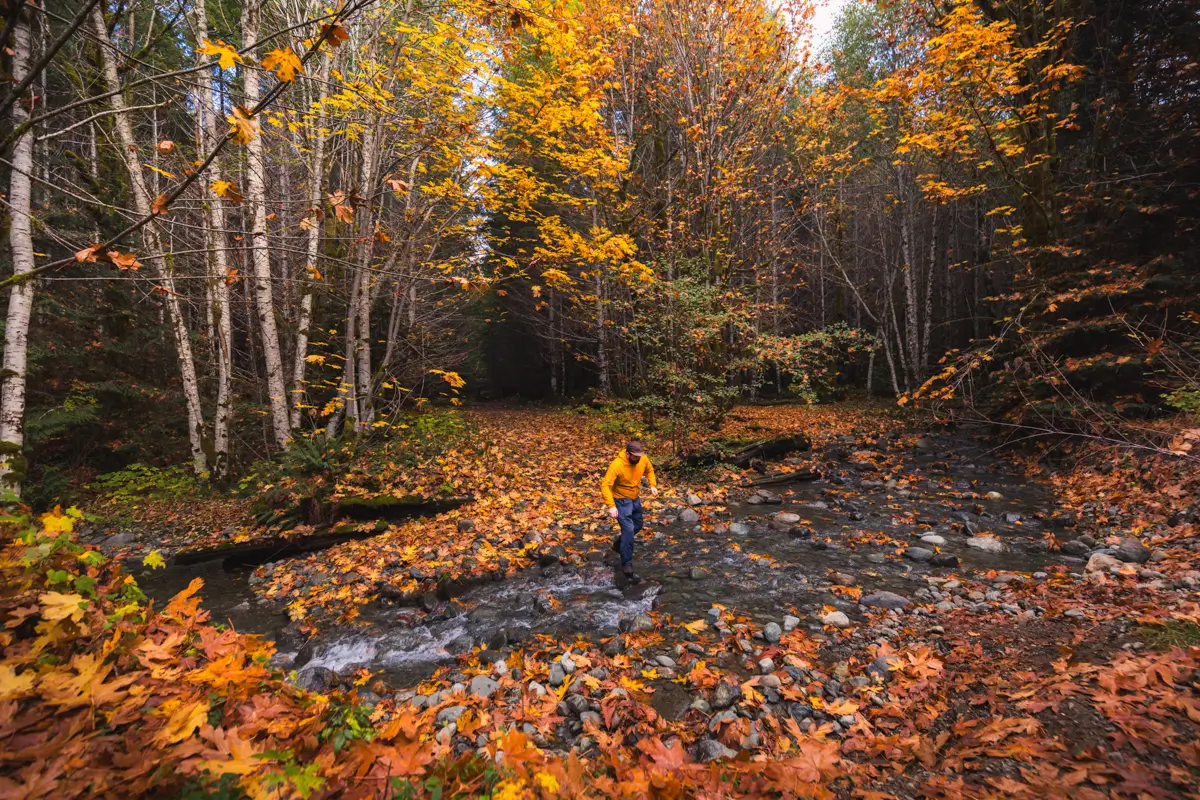
October on Vancouver Island fully embraces the autumn season, with average temperatures cooling to between 8°C and 13°C. This month sees a more pronounced increase in rainfall, setting the stage for the return to lush, green landscapes that the Pacific Northwest is known for. Despite the wetter weather, there are still many crisp, clear days that showcase the beauty of fall.
The foliage across the island transitions to vibrant hues of yellow, orange, and red, offering spectacular views for leaf peepers. The cooler weather and changing scenery make October an ideal time for hiking through the island’s forests and parks, though you may have to compete with other hikers for views of the foliage. Goldstream Provincial Park near Victoria becomes incredibly popular this time of year, but not just for the colours of the trees. Rivers and creeks throughout the Island see the return of spawning salmon, followed by hungry bears eager for an easy meal.
October is also the month that mushroom foragers explore the woods. Fortunately most trails are relatively quiet as the vast amount of tourists have gone home, with the last cruise ship leaving this month.
Weather on Vancouver Island in November
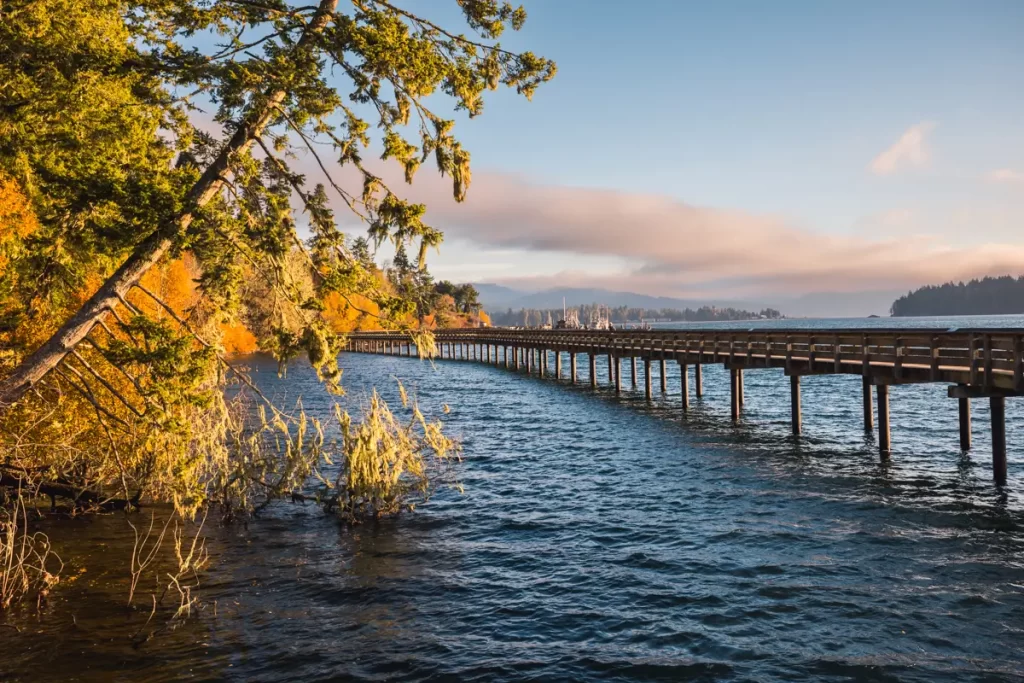
November on Vancouver Island marks a significant shift towards winter, with average temperatures dropping to between 4°C and 9°C. Rainfall increases substantially this month, characterizing the typical start of the wet season that the Pacific Northwest is known for. Despite the prevalence of rainy days, there are occasional breaks of crisp, clear weather that offer the opportunity to enjoy the outdoors without Goretex.
The landscape continues its transition, with the last of the autumn leaves falling and the natural world preparing for winter. Wildlife observation shifts focus from the sea, with the whalewatching season coming to an end. Salmon runs continue up and down the Island however, and bears and bald eagles are common sights feasting on the fish.
Outdoor activities adapt to the changing conditions. Hiking and walking remain popular, with waterproof gear essential for staying comfortable. The cooler, wetter weather also brings a different experience to the island’s trails, with moss-covered forests and misty vistas lending a mystical feel to outdoor adventures. Bare branches against the often grey sky are now the most common sight in the woods.
Water-based activities are mostly on hold due to cooler temperatures and rougher sea conditions. However, storm watching becomes a popular activity, particularly on the west coast of the island in locations like Tofino, where the powerful Pacific storms make landfall with dramatic effect. Tofino is also home to the Tofino Oyster Festival this month.
Weather on Vancouver Island in December
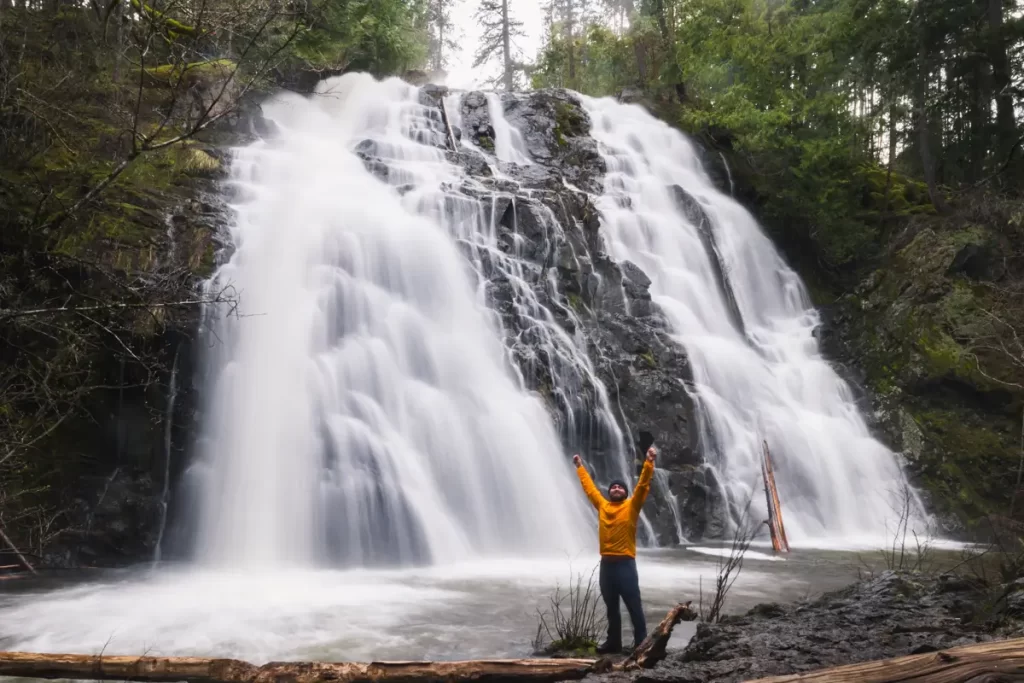
Greater Christie Falls on Vancouver Island in December
December on Vancouver Island fully ushers in the winter season, with temperatures typically ranging from 3°C to 7°C. This month is characterized by its short days and long nights, alongside an increase in rainfall, contributing to the region’s reputation for wet winters. Despite this, the temperate climate means snow is rare at lower elevations, though the mountainous areas may receive a snow blanket, offering scenic winter landscapes.
The rainy weather dominates the outdoor experience, transforming the island’s forests and parks into lush, verdant spaces that are quintessentially West Coast. The rain also fills the streams and waterfalls, making them particularly impressive this time of year.
Snowshoeing and cross-country skiing opportunities begin to emerge, providing a winter sports option for enthusiasts, while the rough waters of the Pacific make December an ideal time for storm watching, especially on the island’s west coast, where the natural spectacle attracts visitors seeking the thrill of witnessing the ocean’s power up close.
Culturally, December is a vibrant month on Vancouver Island, with numerous holiday events, markets, and light displays that bring festive cheer to the communities. These events offer a warm contrast to the outdoor chill and are a significant draw for both locals and visitors looking to celebrate the season.
Best Time of Year to Visit Vancouver Island for Whale Watching
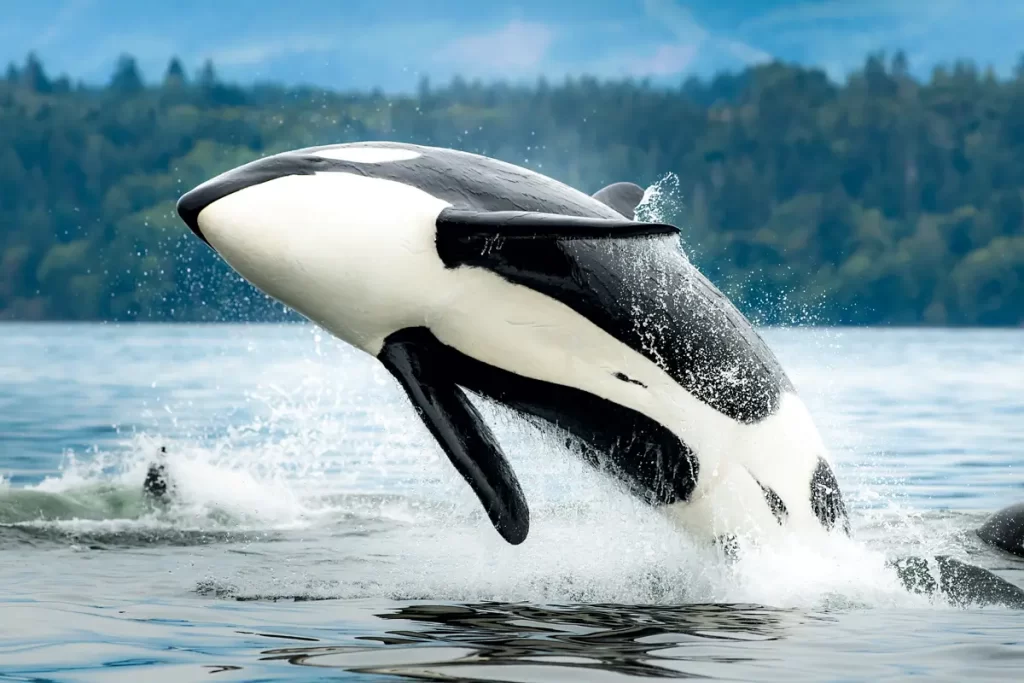
May to August is the best time of year for encountering orcas, particularly in the waters around the southern part of the island and the Johnstone Strait. Humpback whales, which have seen a resurgence in the area, are also commonly spotted as they return to the nutrient-rich waters during these months, alongside minke whales, fin whales and the tail end of the gray whale migration. While it is still possible to see whales outside of this peak season, it’s never a guarantee.
Best Time of Year to Visit Vancouver Island for the Salmon Run

Vancouver Island’s salmon run occurrs from late summer through fall, when various species of salmon return to their freshwater spawning grounds. The migration attracts a wide range of predators and offers unique wildlife viewing opportunities across the island’s rivers and streams. The peak season for observing the salmon run is generally from September to November, varying by species and location. Near Victoria, Goldstream’s salmon run usually begins around mid-October, but Port Alberni’s Stamp River run begins at the end of August.
Best Time of Year to Visit Vancouver Island for Grizzly Bear Tours
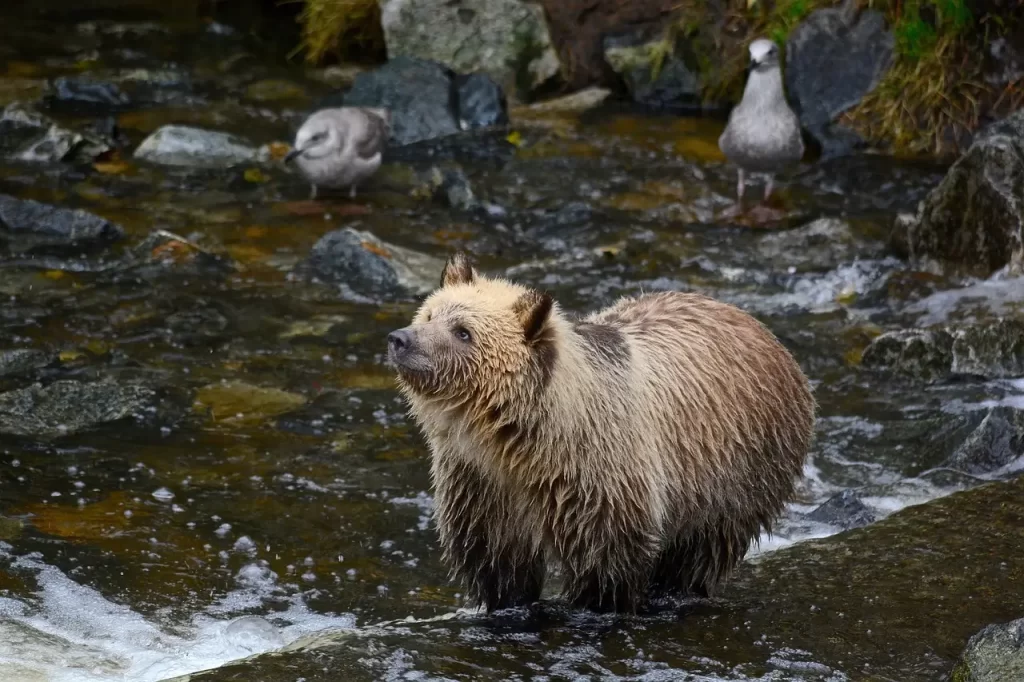
During late August, as the first salmon begin to make their way upstream, grizzly bears start to emerge in greater numbers along the riversides and coastal areas to take advantage of this abundant food source. The activity reaches its peak in September and October, when the salmon runs are at their fullest, and bears are actively feeding to build up fat reserves for the winter hibernation. The most popular jumping-off point for grizzly bear tours is the town of Campbell River in Central Vancouver Island. It’s advisable to book tours well in advance, as they are highly sought after and space can be limited.
Best Time of Year to Visit Vancouver Island for the Herring Spawn
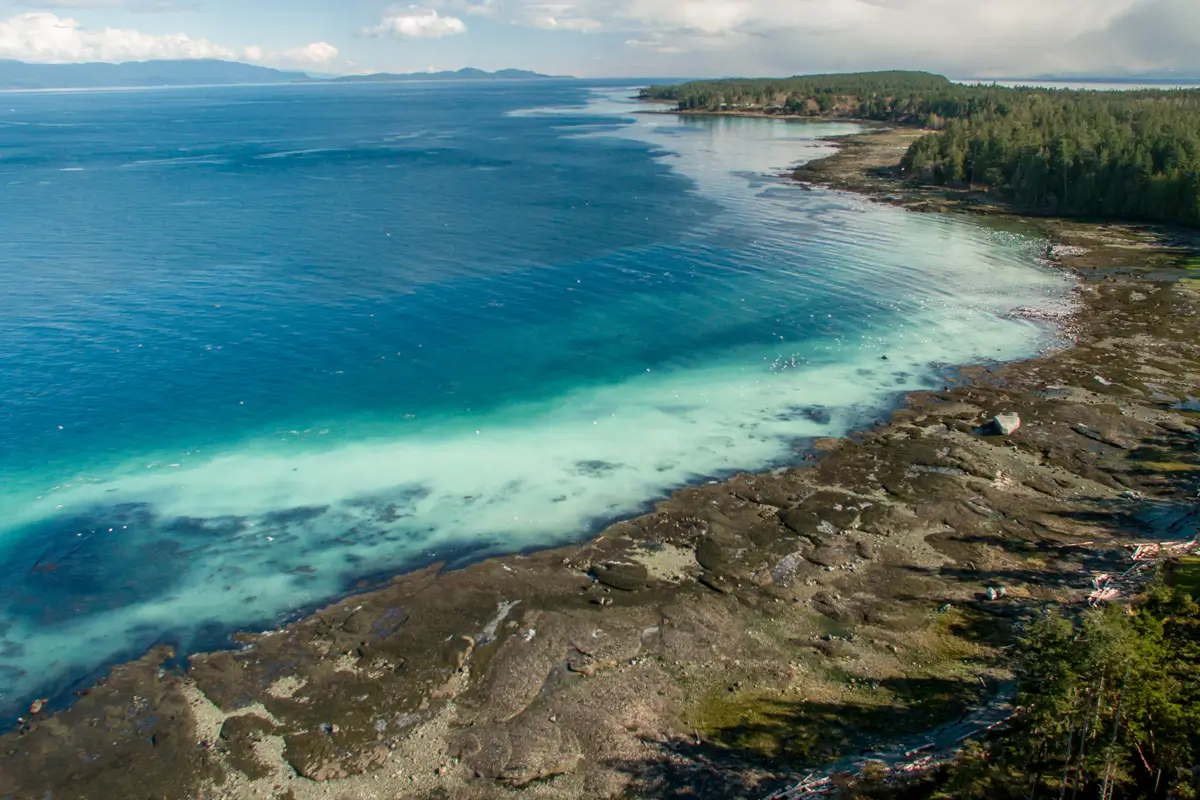
During the herring spawn, the waters close to shore turn a vivid turquoise blue due to the milky sperm released by the male herring to fertilize the millions of tiny eggs released by the females. It’s also a crucial food source for many marine animals, including birds, seals, and sea lions, making it an excellent time for wildlife observation. Each individual site only lasts for a couple days before disappearing, with the first site of the year being at the northern end of the island before slowly moving southwards over several weeks. While specific dates vary from year to year, it’s nearly guaranteed to take place in March.
Best Time of Year to Visit Vancouver Island for Hiking
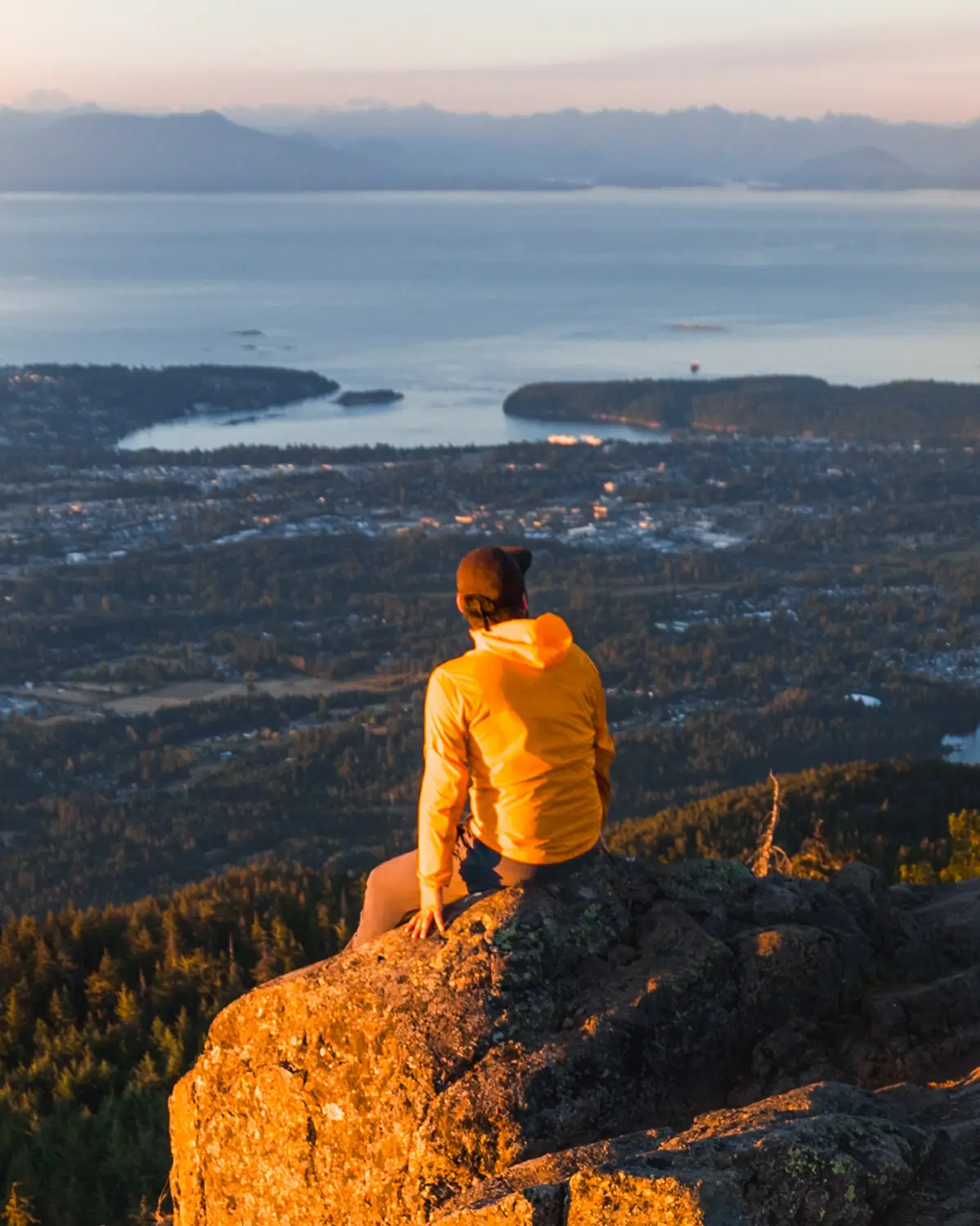
April to early October is the best time of year for hiking on Vancouver Island, with warmer temperatures, minimal rainfall, and trails that are generally dry and accessible. As well, most of the regions plants come into bloom during his time, with the last trees regrowing their leaves in June. Most higher mountain hikes are no longer blocked by snow, and more daylight hours makes it easier to take longer day hikes, as well as to undertake multiday backpacking trips.
Best Time of Year to Visit Vancouver Island for Surfing
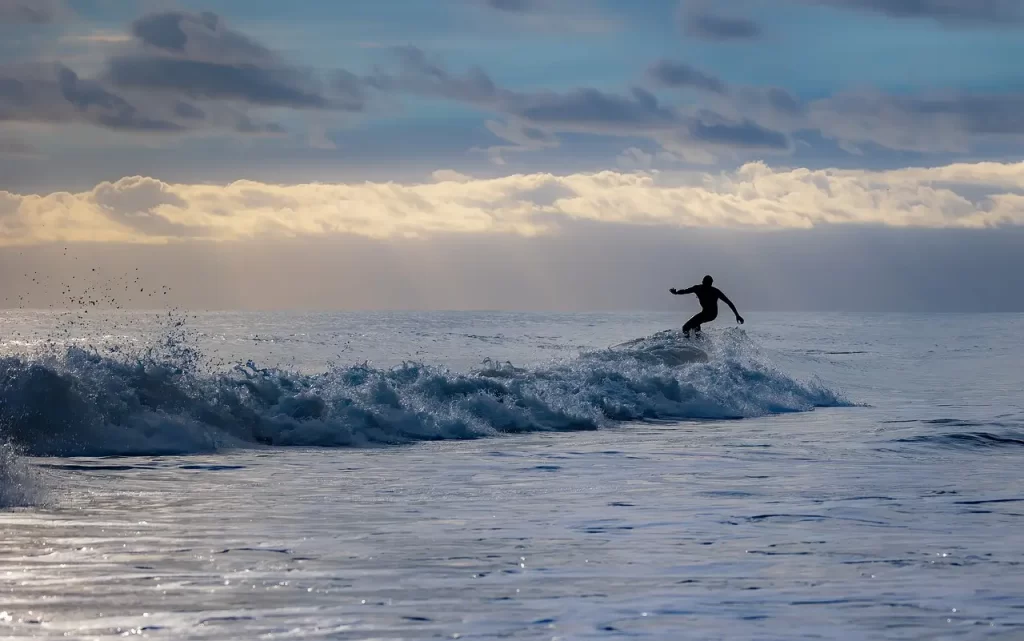
September to November is widely regarded as the best time to surf on Vancouver Island, particularly in Tofino, which is known as Canada’s Surf Capital. The water temperature is the warmest of the year thanks to the summer sun, and the winds shift to offshore, creating perfectly groomed waves that are ideal for surfing. The onset of the first large swells of the season occurs in October, bringing with it frothy waves that can exceed 10 feet. Tourist season has also tapered off, leaving the beaches less crowded and the waves more accessible. Make sure to check out Queen of the Peak Women’s Surf Championships in September as well.
Best Time of Year to Visit Vancouver Island for Waterfalls
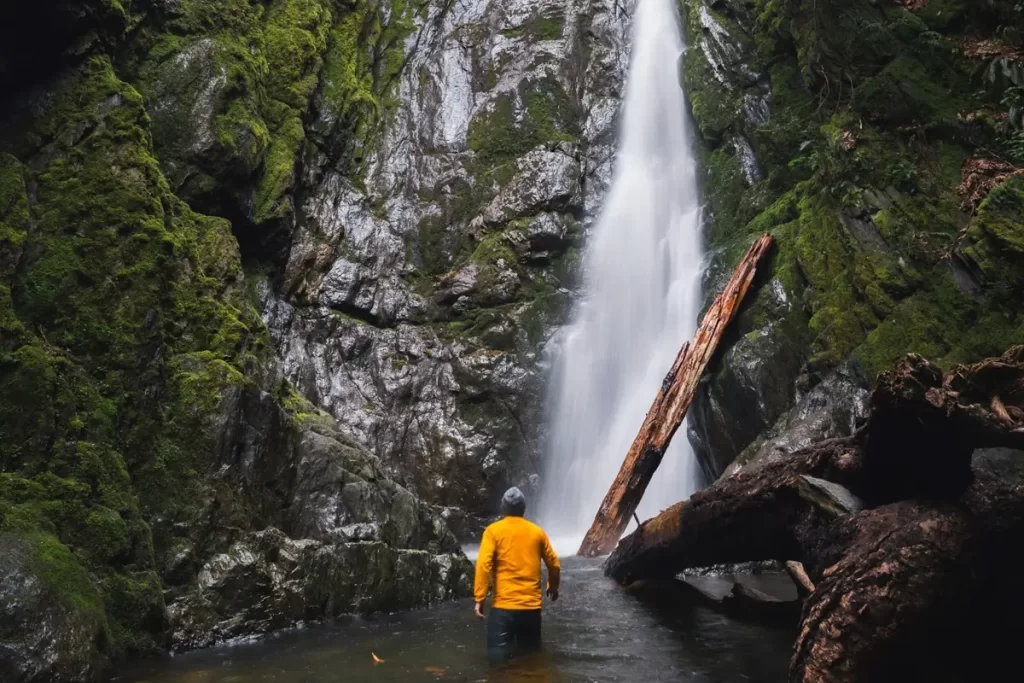
The best time of year to visit Vancouver Island for viewing rushing waterfalls is during the late winter and early spring months, from February through April. This period follows the seasonal rains and melting snow from higher elevations, which significantly increase the water flow, making the waterfalls especially powerful and scenic. By late sumnmer most Vancouver Island waterfalls have dried up to little more than trickles. Trails being less busy are another advantage in the winter, although rain gear and hiking boots are a necessity.
